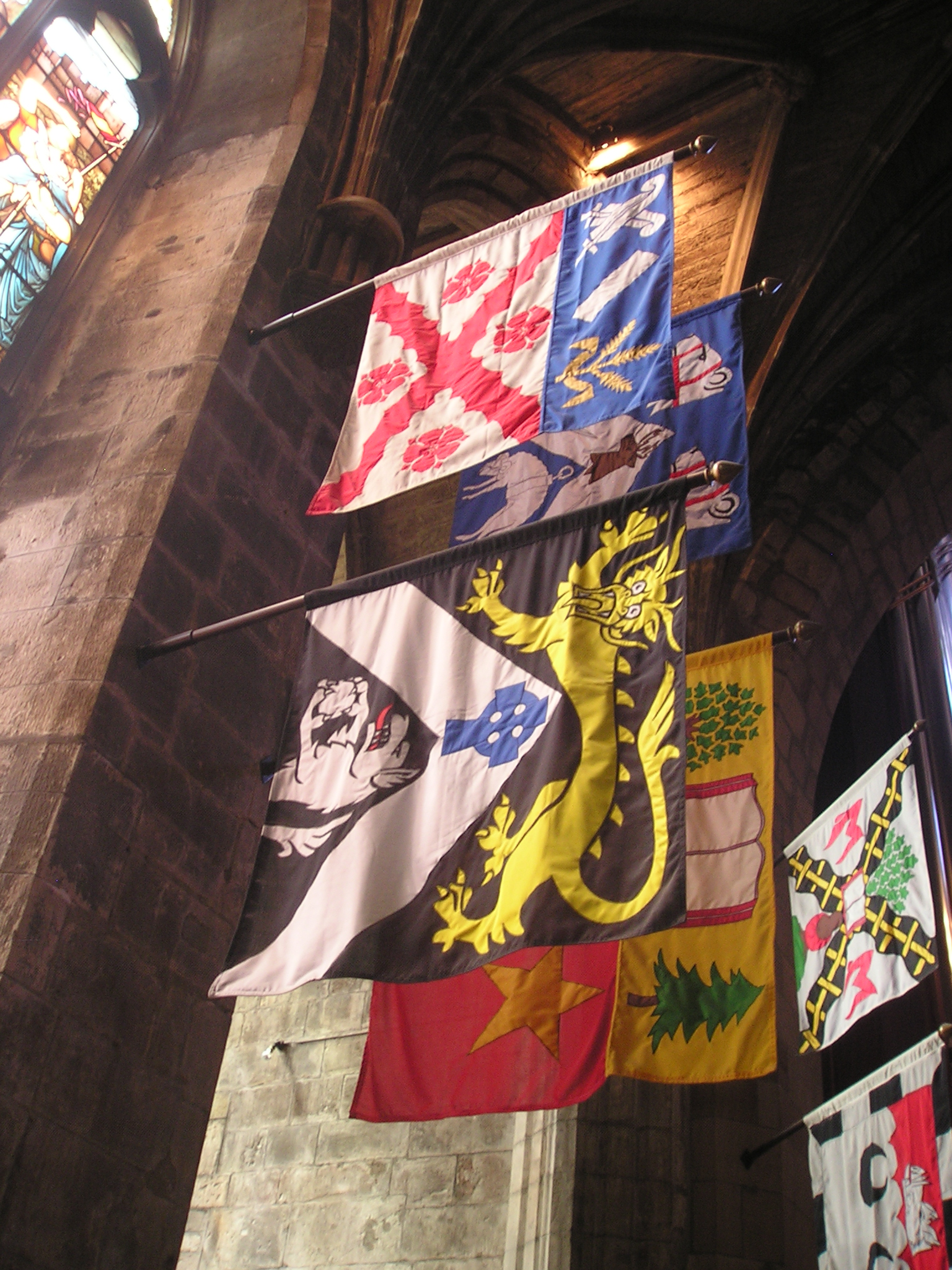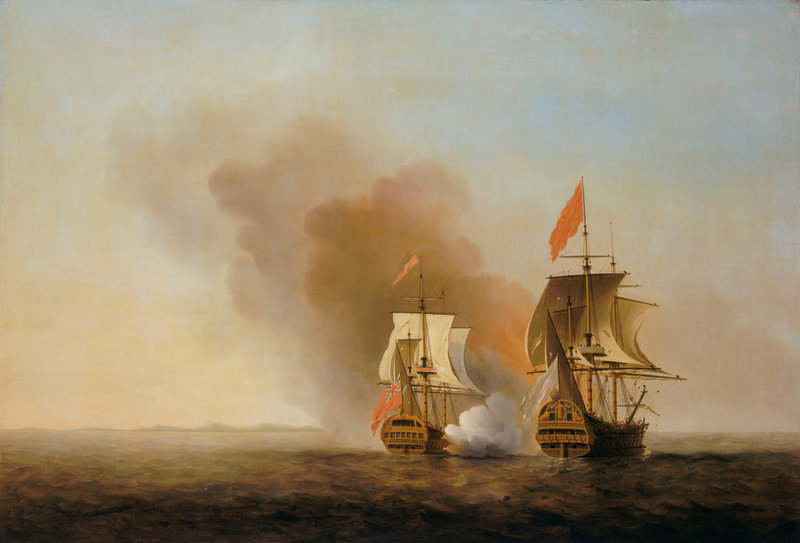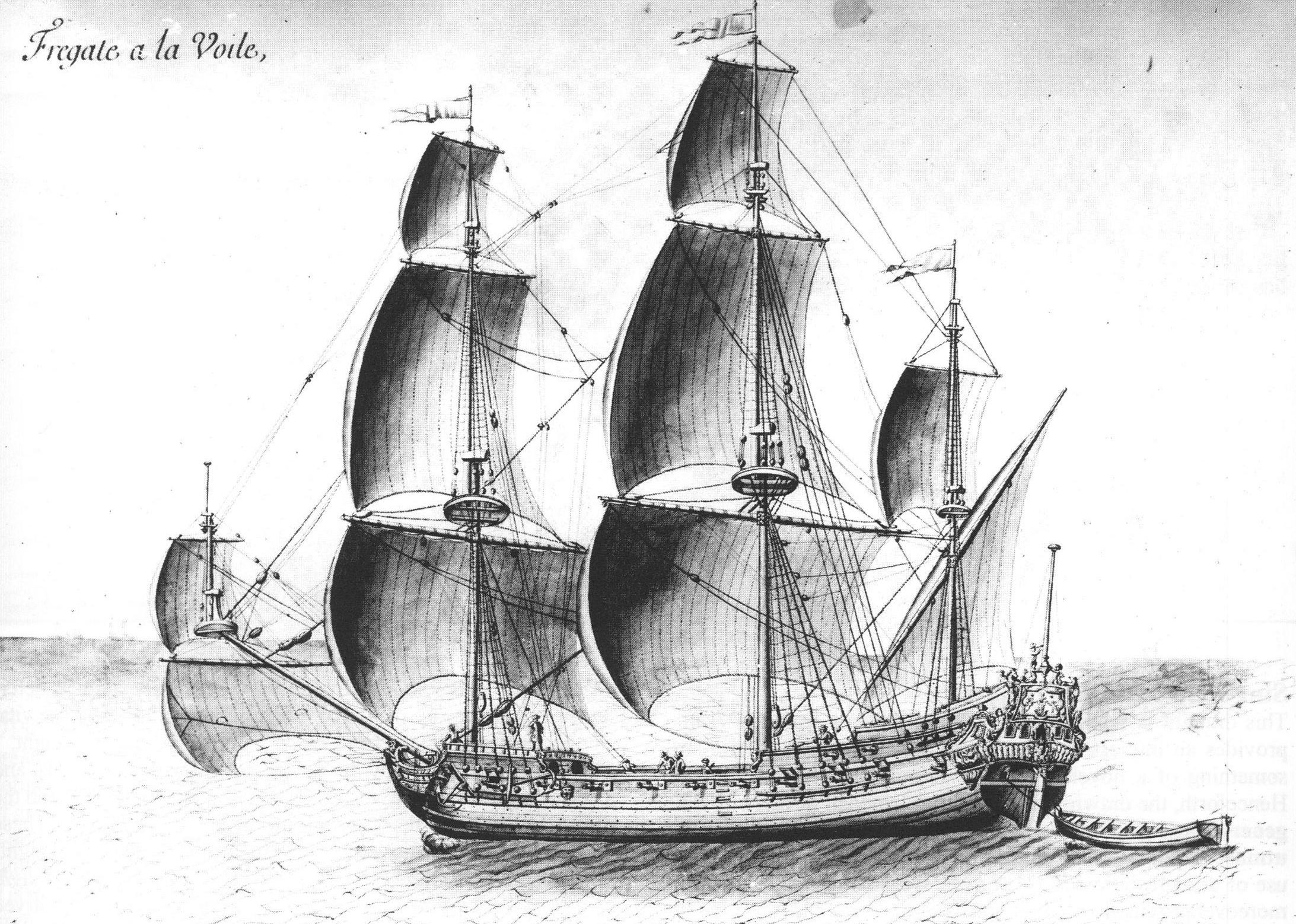|
San Esteban Apedreado
The ''San Esteban Apedreado'' was a fifth-rate frigate in the Spanish navy that ran ashore and was damaged in the Rio de la Plata in 1741 and was broken up in 1744 or 1745. Construction The ''San Esteban Apedreado'' was a fifth-rate frigate built in the Guarnizo shipyard near Santander, Spain, by Lorenzo Arzueta. Its length was , its keel , its beam , and its depth in the hold . It displaced 625 tons. It carried eighteen 12-pound guns on the lower gun deck, eighteen 8-pound guns on the upper gun deck, and four 4-pound guns on the quarterdeck. In 1741, it had a crew of 350. Career The ''San Esteban Apedreado'' was acquired by the Spanish Navy in 1726. In 1730 it was stationed at Havana. It sailed from Havana on 26 May 1731, carrying 4,000,000 pesos, and reached Cádiz on 14 July 1731. In October 1731 it carried troops from Cadiz to Livorno with the fleet of the Marquis del Mari. It returned to Cadiz to be careened in February 1732. The ''San Esteban Apedreado'' left Cadiz in 1 ... [...More Info...] [...Related Items...] OR: [Wikipedia] [Google] [Baidu] |
Banner Of Arms Crown Of Castille Habsbourg Style
A banner can be a flag or another piece of cloth bearing a symbol, logo, slogan or another message. A flag whose design is the same as the shield in a coat of arms (but usually in a square or rectangular shape) is called a banner of arms. Also, a bar-shaped piece of non-cloth advertising material sporting a name, slogan, or other marketing message is also a banner. Banner-making is an ancient craft. Church banners commonly portray the saint to whom the church is dedicated. The word derives from Old French ''baniere'' (modern french: bannière), from Late Latin ''bandum'', which was borrowed from a Germanic source (compare got, 𐌱𐌰𐌽𐌳𐍅𐌰, translit=bandwa). Cognates include Italian ''bandiera'', Portuguese ''bandeira'', and Spanish ''bandera''. Vexillum The vexillum was a flag-like object used as a military standard by units in the Ancient Roman army. The word ''vexillum'' itself is a diminutive of the Latin ''velum'', meaning a sail, which confirms t ... [...More Info...] [...Related Items...] OR: [Wikipedia] [Google] [Baidu] |
Buenos Aires
Buenos Aires ( or ; ), officially the Autonomous City of Buenos Aires ( es, link=no, Ciudad Autónoma de Buenos Aires), is the Capital city, capital and primate city of Argentina. The city is located on the western shore of the Río de la Plata, on South America, South America's southeastern coast. "Buenos Aires" can be translated as "fair winds" or "good airs", but the former was the meaning intended by the founders in the 16th century, by the use of the original name "Real de Nuestra Señora Santa María del Buen Ayre", named after the Madonna of Bonaria in Sardinia, Italy. Buenos Aires is classified as an Global city, alpha global city, according to the Globalization and World Cities Research Network (GaWC) 2020 ranking. The city of Buenos Aires is neither part of Buenos Aires Province nor the Province's capital; rather, it is an autonomous city, autonomous district. In 1880, after Argentine Civil War, decades of political infighting, Buenos Aires was federalization of Bueno ... [...More Info...] [...Related Items...] OR: [Wikipedia] [Google] [Baidu] |
18th-century Ships
The 18th century lasted from January 1, 1701 ( MDCCI) to December 31, 1800 ( MDCCC). During the 18th century, elements of Enlightenment thinking culminated in the American, French, and Haitian Revolutions. During the century, slave trading and human trafficking expanded across the shores of the Atlantic, while declining in Russia, China, and Korea. Revolutions began to challenge the legitimacy of monarchical and aristocratic power structures, including the structures and beliefs that supported slavery. The Industrial Revolution began during mid-century, leading to radical changes in human society and the environment. Western historians have occasionally defined the 18th century otherwise for the purposes of their work. For example, the "short" 18th century may be defined as 1715–1789, denoting the period of time between the death of Louis XIV of France and the start of the French Revolution, with an emphasis on directly interconnected events. To historians who expand ... [...More Info...] [...Related Items...] OR: [Wikipedia] [Google] [Baidu] |
Age Of Sail Merchant Ships Of Spain
Age or AGE may refer to: Time and its effects * Age, the amount of time someone or something has been alive or has existed ** East Asian age reckoning, an Asian system of marking age starting at 1 * Ageing or aging, the process of becoming older ** Senescence, the gradual deterioration of biological function with age ** Human development (biology) * Periodization, the process of categorizing the past into discrete named blocks of time ** Ages of Man, the stages of human existence on the Earth according to Greek mythology and its subsequent Roman interpretation **Prehistoric age Places * AGE, the IATA airport code for Wangerooge Airfield, in Lower Saxony, Germany People * Åge, a given name * Aage, a given name * Agenore Incrocci, an Italian screenwriter Arts, entertainment, and media Fictional entities * ''Ages'', worlds in the ''Myst'' video game series Music * "Age" (song), a song by Jim and Ingrid Croce Periodicals * ''Age'' (journal), a scientific journal on ageing, ... [...More Info...] [...Related Items...] OR: [Wikipedia] [Google] [Baidu] |
Cape Horn
Cape Horn ( es, Cabo de Hornos, ) is the southernmost headland of the Tierra del Fuego archipelago of southern Chile, and is located on the small Hornos Island. Although not the most southerly point of South America (which are the Diego Ramírez Islands), Cape Horn marks the northern boundary of the Drake Passage and marks where the Atlantic and Pacific Oceans meet. Cape Horn was identified by mariners and first rounded in 1616 by the Dutchman Willem Schouten and Jacob Le Maire, who named it after the city of Hoorn in the Netherlands. For decades, Cape Horn was a major milestone on the clipper route, by which sailing ships carried trade around the world. The waters around Cape Horn are particularly hazardous, owing to strong winds, large waves, strong currents and icebergs. The need for boats and ships to round Cape Horn was greatly reduced by the opening of the Panama Canal in August 1914. Sailing around Cape Horn is still widely regarded as one of the major challe ... [...More Info...] [...Related Items...] OR: [Wikipedia] [Google] [Baidu] |
George Anson, 1st Baron Anson
Admiral of the Fleet (Royal Navy), Admiral of the Fleet George Anson, 1st Baron Anson, (23 April 1697 – 6 June 1762) was a Royal Navy officer. Anson served as a junior officer during the War of the Spanish Succession and then saw active service against Spain at the Battle of Cape Passaro during the War of the Quadruple Alliance. He then undertook a circumnavigation of the globe during the War of Jenkins' Ear. Anson commanded the fleet that defeated the French Jacques-Pierre de Taffanel de la Jonquière, Marquis de la Jonquière, Admiral de la Jonquière at the First Battle of Cape Finisterre (1747), First Battle of Cape Finisterre during the War of the Austrian Succession. Anson went on to be First Lord of the Admiralty during the Seven Years' War. Among his reforms were the removal of corrupt defence contractors, improved medical care, submitting a revision of the Articles of War (Royal Navy), Articles of War to Parliament to tighten discipline throughout the Navy, Milit ... [...More Info...] [...Related Items...] OR: [Wikipedia] [Google] [Baidu] |
José Alfonso Pizarro
José Alfonso Pizarro, Marquis del Villar (sometimes given as José Alonso Pizarro) (1689 in Murcia – 1762 in Madrid) was a Spanish naval officer and colonial administrator. From November 6, 1749 to November 24, 1753 he was viceroy of the Spanish Viceroyalty of New Granada. Biography As a youth Pizarro entered the naval service of the Knights of Malta. He was a knight of the Order and gentleman of the bedchamber of the king. Later he served in the Spanish navy, rising to the rank of rear admiral. When the Spanish government heard of the expedition of British Admiral George Anson to the Pacific, a fleet of two ships of the line and four frigates was despatched with a regiment of infantry for Chile. The fleet, under Pizarro's command, left in October 1740, and arrived on January 5, 1741 in the Río de la Plata. Hearing that Anson was refitting in Santa Catharina for entering the Pacific by the Strait of Le Maire (off the southeast tip of Tierra del Fuego), Pizarro sailed ... [...More Info...] [...Related Items...] OR: [Wikipedia] [Google] [Baidu] |
Ferrol, Galicia
Ferrol () is a city in the Province of A Coruña in Galicia, on the Atlantic coast in north-western Spain, in the vicinity of Strabo's Cape Nerium (modern day Cape Prior). According to the 2021 census, the city has a population of 64,785, making it the seventh largest settlement in Galicia. With Eume to the south and Ortegal the north, Ferrol forms the Ferrolterra comarca, and together with A Coruña forms the second largest conurbation in Galicia, with a total population of 640,000 in 2016. The harbour, for depth, capacity and safety, is not equalled by many in Europe. The entrance is very narrow, commanded by forts, and may even be shut by a steccado. The city has been a major naval shipbuilding centre for most of its history, being the capital of the Spanish Navy's Maritime Department of the North since the time of the early Bourbons. Before that, in the 17th century, Ferrol was the most important arsenal in Europe. Today, the city contains some of the major shipbuildin ... [...More Info...] [...Related Items...] OR: [Wikipedia] [Google] [Baidu] |
Livorno
Livorno () is a port city on the Ligurian Sea on the western coast of Tuscany, Italy. It is the capital of the Province of Livorno, having a population of 158,493 residents in December 2017. It is traditionally known in English as Leghorn (pronounced , "Leghorn" in the Oxford Dictionaries Online. or ). During the Renaissance, Livorno was designed as an " ideal town". Developing considerably from the second half of the |
Frigate
A frigate () is a type of warship. In different eras, the roles and capabilities of ships classified as frigates have varied somewhat. The name frigate in the 17th to early 18th centuries was given to any full-rigged ship built for speed and maneuverability, intended to be used in scouting, escort and patrol roles. The term was applied loosely to ships varying greatly in design. In the second quarter of the 18th century, the 'true frigate' was developed in France. This type of vessel was characterised by possessing only one armed deck, with an unarmed deck below it used for berthing the crew. Late in the 19th century (British and French prototypes were constructed in 1858), armoured frigates were developed as powerful ironclad warships, the term frigate was used because of their single gun deck. Later developments in ironclad ships rendered the frigate designation obsolete and the term fell out of favour. During the Second World War the name 'frigate' was reintroduced to ... [...More Info...] [...Related Items...] OR: [Wikipedia] [Google] [Baidu] |
Cádiz
Cádiz (, , ) is a city and port in southwestern Spain. It is the capital of the Province of Cádiz, one of eight that make up the autonomous community of Andalusia. Cádiz, one of the oldest continuously inhabited cities in Western Europe, was founded by the Phoenicians.Strabo, '' Geographica'' 3.5.5 In the 18th century, the Port in the Bay of Cádiz consolidated as the main harbor of mainland Spain, enjoying the virtual monopoly of trade with the Americas until 1778. It is also the site of the University of Cádiz. Situated on a narrow slice of land surrounded by the sea‚ Cádiz is, in most respects, a typically Andalusian city with well-preserved historical landmarks. The older part of Cádiz, within the remnants of the city walls, is commonly referred to as the Old Town (Spanish: ''Casco Antiguo''). It is characterized by the antiquity of its various quarters (''barrios''), among them ''El Pópulo'', ''La Viña'', and ''Santa María'', which present a marked con ... [...More Info...] [...Related Items...] OR: [Wikipedia] [Google] [Baidu] |
Havana
Havana (; Spanish: ''La Habana'' ) is the capital and largest city of Cuba. The heart of the La Habana Province, Havana is the country's main port and commercial center.Cuba ''The World Factbook''. Central Intelligence Agency. The city has a population of 2.3million inhabitants, and it spans a total of – making it the largest city by area, the most populous city, and the List of metropolitan areas in the West Indies, fourth largest metropolitan area in the Caribbean region. The city of Havana was founded by the Spanish Empire, Spanish in the 16th century, it served as a springboard for the Spanish colonization of the Americas, Spanish conquest of the Americas becoming a stopping point for Spanish galleons returning to Spain. ... [...More Info...] [...Related Items...] OR: [Wikipedia] [Google] [Baidu] |






